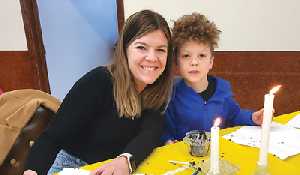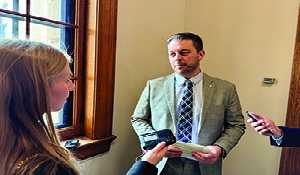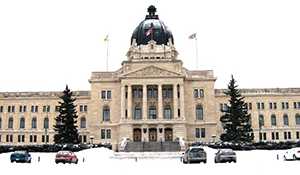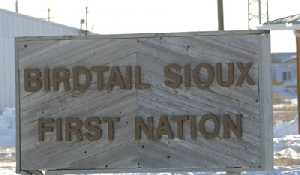PDAP eligibility expanded
June 29, 2022, 2:40 pm
Sierra D'Souza Butts, Local Journalism Initiative Reporter
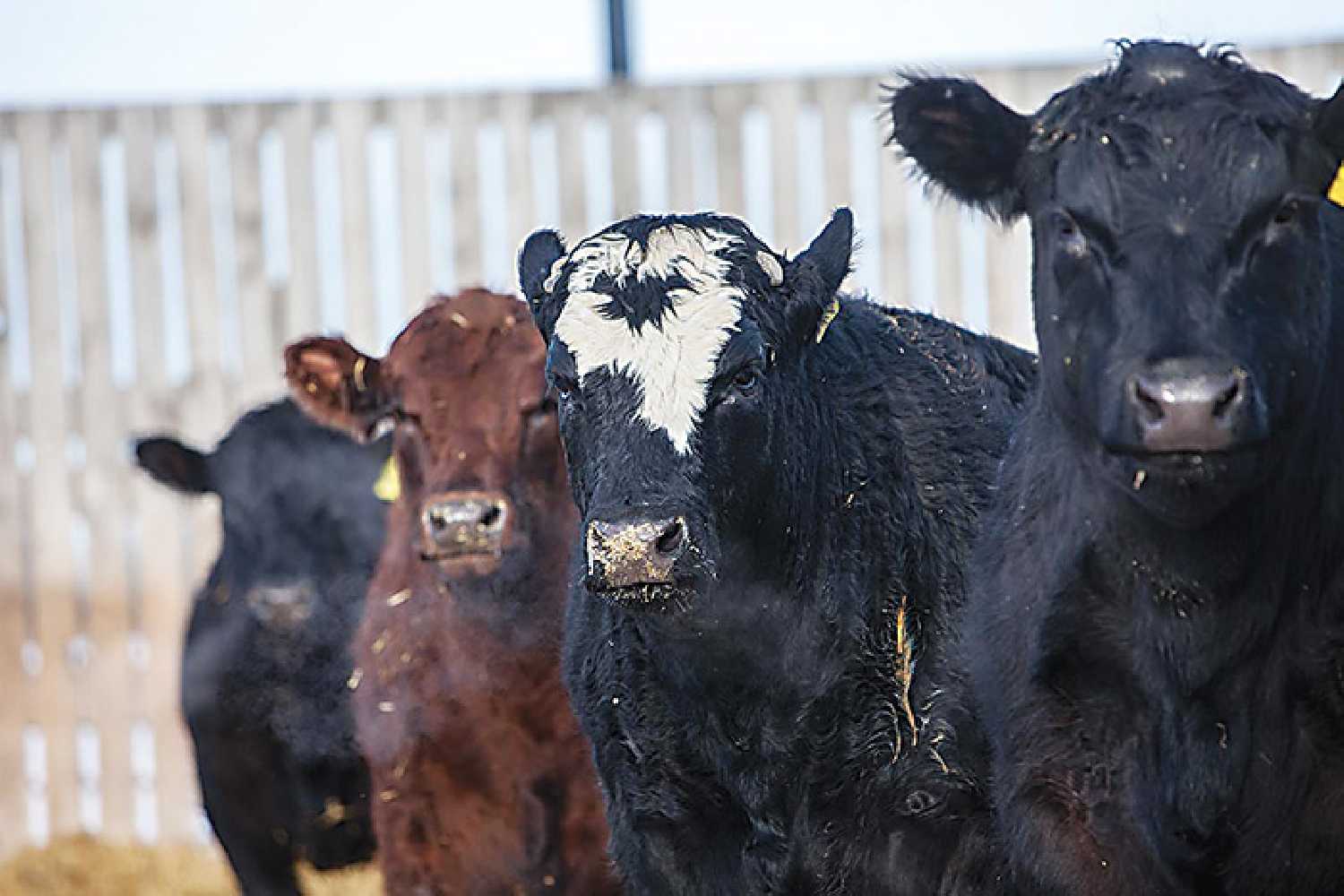

The Government of Saskatchewan recently announced lifting the requirements for the Provincial Disaster Assistance Program (PDAP) allowing farmers who make more than $2 million in gross revenues to be eligible for the program.
The new program will assist those with more than $2 million in gross revenues who otherwise meet the definition of a small business, and will be available to producers who were affected by disasters that occurred during the month of April 2022.
This will help agricultural operations impacted by extreme weather events this spring, but who did not qualify under the original PDAP revenue restrictions.
“It was nice to see the government come through, we ran into the same situation in 2011 and there were no changes made then,” said Trevor Green, RM of Moosomin and APAS representative.
“Whether they came around thinking the changes would help some beef producers or it was a little pressure from APAS, I know the guys at APAS worked really hard on it, Ian and Steven, also the employees we hired for APAS, Donavan and Duane.
“It will help people get through until we can get some production insurance for the beef side of things.”
Green was asked what role APAS play ed in having the provincial government expand the eligibility requirements for the program.
“APAS is basically a lobbying group that takes farmers’ voices to the government, so that we have one group sitting at the table to talk about the main issues in farming,” he said.
“They do have a seat at the table with the provincial government, as long as we can keep the lines of communication open between APAS and the Ag Minister, it shows that we can come to a solution when there are issues in agriculture.
“We have to work together with the provincial government as APAS, and have a good working relationship to bring the farmers’ voice to the government, sometimes hear the government’s outlook on the farm too.”
Now that the eligibility for PDAP has expanded, Green said he knows it will help southeast producers in need.
“I definitely know a few producers that will be applying for it now that it has changed,” he said.
“It will help with the disasters that farmers faced in April for the dead calves. For these producers, it’s definitely going to be a huge help to large beef producers because some of them had well over $100,000 in losses, which is pretty significant.”
He explained why he thinks the Government of Saskatchewan made changes to the program.
“I think they saw a need in the southeast to maybe help out in the industry, to help some calf and cow farmers who had significant losses,” Green said.
“It’s a very important industry to the province and we have to do everything to keep it going. The end goal is we need a production insurance for cows, you can insure every acre for farmland, but I can’t insure a cow.”
Ultimately, Green said he hopes the provincial government can come up with an insurance program that helps livestock producers.
“That’s our end goal for where we have to get to, we have to have some type of production insurance for livestock, whether it be sheep, beef, or whatever,” he shared.
He spoke about his reaction when he saw the provincial government’s adjustments to the program.
“It made me feel that the government is listening, and that there’s an open line of communication between producers and the government,” he said.
“It’s good that it happened, we have a lot of work ahead of us to get a production insurance program ahead of us, it’s a step in the right direction though.”
Happy to see PDAP open its eligibility requirements
Mark McCorriston, a grain and cattle farmer who farms west of Moosomin shared his thoughts on the new PDAP requirements.
“It’s good news. After the storm happened I originally read in the newspaper that they were bringing back PDAP. My wife and I looked into the program and after a little bit of reading, we learned that we were exempt from it because we also fall into the circumstances where we gross more than $2 million,” said McCorriston.
“I felt a little singled out, just because we chose to take on a little more workload than some other people, I just didn’t feel like we should be exempt from the program. If there’s one thing I can say about farming, it’s pretty easy to gross quite a bit of money, but netting it is a lot more difficult.
“My wife and I definitely lost some calves and we had some long days during the storm, when you lose your little baby calves it’s pretty emotional. It’s hard on everyone, you kind of lose momentum on the ones you gain because you feel sorry for the ones you lost, then you’re not focused on the ones that you should be caring for.
“It was a tough go during those couple of storms, my wife and I will definitely be applying for that program now that we’re eligible.”
McCorriston said losing the calves he did on the farm not only impacted his production income, but also increased his expenses.
“Not only did we lose income, we had far greater expenses. We were bedding three or four times a day, there was the extra diesel fuel, there was the straw you’re putting down which gives them something dry to lay on to cope with the storm,” he said.
“It was not only a huge loss of potential income, it was also a huge creation of way more expense,” said McCorriston.
“Any kind of help that we get would be greatly appreciated, the whole livestock industry is definitely a struggling industry right now, with inflation, changes in prices of fuel, and high feed cost because of the drought last year.
“There’s not much left in the commercial livestock industry for the bottom line right at these times. My wife and I talked about cutting back, we’ve talked about selling the cattle, but we both love our animals.”
McCorriston said he will be applying for PDAP now that he is eligible.
“Anything from the government would be appreciated, I’m just not sure what to expect. I haven’t heard from anyone else who received anything, but anything would be appreciated,” he said.
“The cost of trying to keep the cattle dry, the added expenses, the extra time, the disheartening events of losing calves, and we’re still struggling from the backlash of the storms.
“Our corral system, I’ve never seen it so muddy in my life. I was talking with a gentleman closer to the Manitoba border, he lived in his yard for 33 years and had cattle the whole time, he said he’s never seen his corral so sloppy. It’s like even when we want to work with the few cattle that are in the yard now, it’s not easy because the corral are just slop.”
Aside from equipment issues because of the weather, McCorriston said he is still dealing with sick calves from the snowstorms in April.
“It’s been hard all around and we still have some calves who got pneumonia, we gave them basic medication and some of the expensive stuff. Some did live, but they’re not 100 per cent and they’re not going to bring in the top dollar that you hope to get in the fall,” he said.
“Not only was there that initial shock of losing a percentage of your calves, it’s an ongoing situation that will probably last for the rest of the year. Mother Nature, at least I feel, has been relentless to us in the southeast corner.”
He was asked why he thinks the Government of Saskatchewan made the changes in PDAP, to accommodate farmers who make more than $2 million in gross revenues a year.
“I would say on average that most of the farms in the area probably gross over $2 million now, and a lot of them if they don’t, there will probably be a gentleman or a lady in that family farm that maybe works in town or has a job somewhere else,” he said.
“They might take care of the family farm after hours, or on the weekend, but I would think that most farms on average especially a mixed operation, to gross $2 million, it’s just not that much money anymore.
“If you think about it, if you want to go buy a new pickup truck it’s $100,000. I’m glad that they made the change, and I think they made the right choice to do that.”
McCorriston commented on APAS working with the provincial government to make this change in PDAP happen.
“APAS seems like they’re wanting to do something for the people right away, and they were lobbying the government that’s above them to do something and it looks like the change has been made,” McCorriston said.
“I feel that they put their nose to the grindstones and lobbied the right people, and got the change that should be made, made. I think they did excellent and did their job, and I appreciate the people that were with APAS who were digging their heels and rallying for us farmers.
“Farming is a labour of love, a lot of people do it for the rewarding aspect of a new calf, when people talk about losing calves and they maybe say it nonchalant, I myself can personally say it’s pretty tough.
“When you’re loading the dead calf into the loader and you have to take them out to the orchid, it’s an emotional thing for everyone, myself included.
“When people talk about losing calves it’s more of an emotional thing than they let on, and they’re just being gentlemen by not getting too in-depth, but it’s definitely hard on everyone.”
Appreciative for APAS working with the provincial government
Kevin Woods, who has a grain and cattle farm and a feed lot near Moosomin said he was happy to see agriculture organizations put pressure on the provincial government.
“I’m happy they finally made the changes, I feel they’re (government) playing catch up, but no complaints,” said Woods.
He explained why he thinks the provincial government made the changes to the program.
“I think because it made sense, also because Saskatchewan Cattlemen’s Association, APAS and a few other producer organizations put a lot of pressure on them. That’s what helped make the change, there’s no question on that,” Woods said.
“No one individual went about it themselves, it was done throughout a co-ordinated effort from several associations. I also think the program is kind of outdated, that was put in place 10 or 15 years ago,and obviously a lot has changed since then.
“I think they’re just trying to catch up, it’s definitely welcomed, I’m happy about it.”
Kevin Hruska, who farms in the north of Esterhazy, Bredenbury and Langenburg areas, shared his thoughts on the adjustments made towards PDAP as well.
“It’s nice they’re being fair about it and not ostracizing the large successful farms,” he said.
Although his farm was impacted by the storm, Hruska said he managed to finish seeding on time.
“We did get everything seeded, we don’t have unseeded acre so I’m not sure if we’ll be eligible, but our seeding was delayed because of the storm,” said Hruska.
“We just finished seeding on June 5 which is unusual. In all honesty the crops are in good condition in our area, we’re not worried for this year.”
































